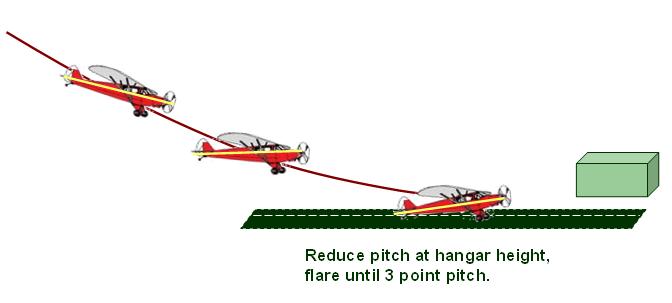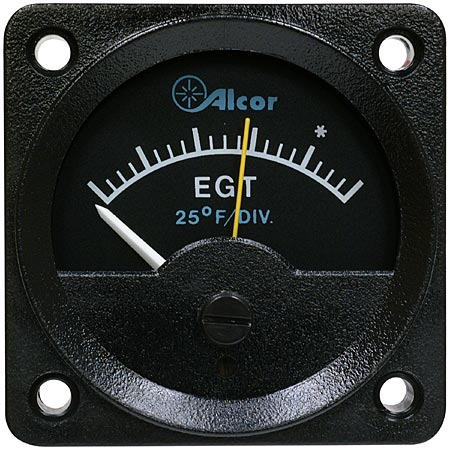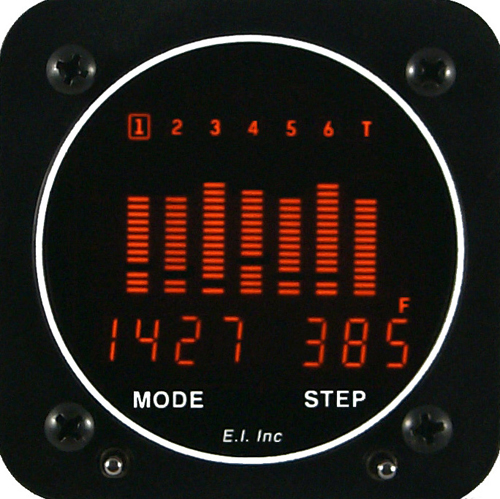Getting a tailwheel endorsement is a lot of fun. I just finished getting mine in a Citabria. See my
earlier post about the Citabria for some pictures of the plane. I always like to keep learning, and I had heard that learning tailwheel will also help your non-tailwheel flying skills. It is also fun and will let me be able to fly a wider range of planes. I dream of flying in a super cub with bush tires some day.
So where to start... First, I picked up a book to hear more of the details, then I took a
few initial lessons that combined tailwheel and aerobatics, then recently I focused on finishing up my tailwheel endorsement in a Citabria at
Air West Flight Center. They have quite a few instructors that specialize in tailwheel and aerobatics, and I found one I liked there.
So here are my thoughts on the experience just after finishing....
Negative StabilityOne of the biggest items to keep in mind is that the tailwheel is negatively stable when on the ground. When trying to slow down, the tailwheel plane wants to flip around since the center of gravity is behind the main wheels; this is especially true if landing incorrectly in a slight crab. If the plane flips all the way around, it is called a ground loop and is very bad. In tricycle gear, the situation is the opposite. In a slight crab while landing a tricycle gear plane, it will tend to correct itself and swerve a little back to the main direction of the momentum. So a tricycle gear pilot needs to be careful of this difference. This same tailwheel negative stability can happen during times other than landing as well. I think I might try to draw some pictures of the forces involved and put this in a separate post. The important thing is do the corrections quickly when they are still needed to be small.
The other item that makes the controls a little different for a tailwheel is the distance between the main wheels and the wheel for steering. The steerable nosewheel is much closer to the main wheels than the steerable tailwheel. The steering mechanism is also more like casters in a tailwheel; the wheel extends out horizontally from where the actual pivot center point is. These effects make the response time to steering input different and delayed. You have to be careful too much change in steering too late does not happen.
Taxi OperationsForces during taxiing are different and stiffer in general in a tailwheel. If windy, it is harder to turn while facing wind, easier when faced away from wind. The plane will also tend to weathervane and push the tail where the wind is going. Taxi slow.
If you turn sharp, the tailwheel will pop out of the control of the steerable tailwheel rudder pedals. Then it is controlled by the brakes and wind over the rudder itself. Go straight again to have it pop back into standard steerable tailwheel control.
Remember typical wind control while taxiing. Climb into, dive away. But watch out for pushing the stick forward much if using much power; this reduces effectiveness of the tailwheel and can push the nose over if power is used at all. The Compleat Taildragger Pilot book refers to a different taxiing method, but I believe this is for non-steerable tailwheels.
TakeoffNow for the first challenging part. Push full throttle, but keep stick buried backward initially so the steerable tailwheel is solidly on the ground. Then lift the tail at a certain speed by pushing forward on the stick until the attitude out the front window is correct. I was doing this around 40mph in the Citabria. You can get a little better feel of what is the level attitude when you get up in the air and cruising level; look where the horizon is on the windshield then. Back to our takeoff sequence. We are zooming along at 40mph+ and the tail up. If the attitude is right, the plane will fly off the ground gradually just like tricycle gear. If you hit 60mph+ and it is not, then pull the stick back slightly to let it fly off slowly.
Remember to not forget to lift the tail on takeoff. And lift it fairly quickly on a touch and go, especially if you did not slow down too much. If you do start taking off before lifting the tail, you are flying at a very low speed, so stay in ground effect until good speed is attained.
All that sounds relatively easy, but it does happen fast, and you have to be very good on the rudders through it all. That is what all of us tricycle gear pilots need to get better at. The left turning tendencies are changing constantly, so you have to compensate differently all the time. Be particularly attentive when you raise the tail. If you raise it faster, the turning tendency will change more significantly, and you will need to be more attentive. So raising the tail at a medium speed is easier. Once the tail is in the air, you are then susceptable to crosswind pushing the tail and any gusty winds; so continue to be attentive on the rudders.
Jabbing on the rudder pedals works well; be careful with sustained pushes. The effect of pressing the rudder pedal is a bit delayed and can easily be more than necessary, so a light jab works well.
Another method for learning rudders is happy feet. Try a little left then a little right rudder and watch the plane is in correct position, and continue a little left and right pedal. This prevents you from being lazy from tricycle gear operation and then not do the appropriate correction soon enough. You are already seeing the effects, so you compensate right away with small corrections.
Pattern speeds, flaps, and power settingsAs with any new plane, it is good to become familiar with what the different power/speed/flap settings are.
With the Citabria, 70mph worked very well for the initial climb. I let the speed go up a little bit on downwind to maybe 80mph, and then bring it back to 70mph on base and final along with a reduction in the RPM to about 1500 RPM.
I heard that 70mph can work pretty well for the Decathalon too. I remember doing 75mph last time which is roughly the same.
3-point Landings A 3-point landing is an attempt to have all three wheels settle onto the runway at the same time right about when the stall horn goes off. This is the most common landing method for people to use in tailwheel trainers like the Citabria.
A 3-point landing is an attempt to have all three wheels settle onto the runway at the same time right about when the stall horn goes off. This is the most common landing method for people to use in tailwheel trainers like the Citabria.
Make sure you are very well lined up with the runway for any small amount of crosswind. Do a foward slip early and maintain it as the winds change as you get lower. Make sure that you fly the plane in until around stall horn would go off. This makes the landing with a fairly nose high attitude; similar of course to when you are taxiing on the ground.
It helps to get the speed as close to 70mph in the Citabria as you can and trim it. Being too fast, makes the plane float and makes more back pressure needed. If you are at the right speed, you still have to ease the stick back during the flare, but it has less pressure and easier. Trimming, of course, helps your back pressure as well. When you get about the height of hangars, then start leveling out, and then flare when you are at the right height above the runway.
When you get close to touching down, you will have to watch the side of the runway with your peripheral vision in order to stay in the middle. Do not get off center from the runway and correct any difference right away. Light jabs on the rudder pedals is best; don't keep sustained pressure. The effect of pressing the rudder pedal is a bit delayed and can easily be more than necessary, so a light jab works best.
If you are not nose high enough in a 3 point at landing, the mains touch, the tail goes down from the weight behind the main wheels, angle of attack goes up, and airplane starts flying again. It looks like a bounce, but it is not from bouncing off the main wheels and is from the airplane flying again. Sometimes it is called a jounce instead because it is different. In tricycle gear, if you touch down a little early, the nose goes down from the weight being in front of the main wheels, angle of attack goes down, and the airplane stops flying. Of course if you touch down way too early in tricycle gear, you can bounce, but this would be even more severe in a tailwheel.
If the tailwheel hits a little before the main wheels this is ok, but don't make it too much before. Having the tailwheel hit slightly first is better than having the mains hit first to prevent the jounce.
Bury the stick backward once tailwheel is on the ground so the steerable tailwheel works well. Do not relax the stick to neutral or push it forward after landing.
Don't slam on the brakes after landing at least in the beginning; this will make it harder to slow down in a controlled manner; it will accent the negative stability. Keep attentive to the rudders all the time until stopped.
One thing I noticed was that the Citabria/Decathalon sit lower than a C182, so you need to flare with a lower sight picture.
I got a chance to sit the back seat a couple times. This is a little strange for a few reasons. It is hard to see the instruments. Also, when you flare, you feel your part of the plane sink because you are behind the pivot point of the plane. And when you flare, your peripheral vision for runway alignment is even more important since you can see less over the nose of the plane.
Wheel Landings
 A wheel landing is a landing where you attempt to have the main wheels touch first and keep the plane with the tail up while the rudder has effectiveness. Also leave the tail up until the airspeed is below stall speed. That way the plane will not try to take off again when the pitch increases when the tail is lowered.
A wheel landing is a landing where you attempt to have the main wheels touch first and keep the plane with the tail up while the rudder has effectiveness. Also leave the tail up until the airspeed is below stall speed. That way the plane will not try to take off again when the pitch increases when the tail is lowered.
Here is how we practiced it. Leave a little power (1300-1500RPM in Citabria), fly a shallower approach at least for starters, get in the flying low over the runway mode, don't let the plane slow down, quickly try to fly exactly level over the runway, but 1-2 feet over, then very very slowly slightly pitch down then level to inch down the runway, when you feel the wheels touch and not bounce, push the stick slightly forward, ease the power back. Bring the tail down after a couple seconds when the rudder is losing effectiveness, then go full stick back.
Flying over the runway is strange especially with enough speed to really keep flying and not flare. Pushing the stick forward is a little strange, but as long as you are slow and power off, this should be fine. Be as close to zero sink rate when initially touching the main wheels down. I flew the final at 70mph and was touching the wheels close to 60mph maybe. If it gets much slower, it tends to bounce.
If the wheel landing ends bounces, convert to a 3 point or go around. Bouncing/jouncing is very easy in the wheel landing. If you land with the slightest descent, the tail goes down, the wing flies again, and you balloon/jounce up. The key is to have the descent rate at something like inches per minute; or you effectively are nudging the plane an inch down at a time until it touches. Once again, it is easy to convert to 3 point or go around. If you convert to a 3 point, it helps to add a little power to re-establish the landing position.
Books and Websites
I looked on Amazon and looked for the best recommended book and asked some people, and ended up getting The Compleat Taildragger Pilot by Harvey S. Plourde. It seemed like a decent book. I reread a few areas after having the lessons and his comments and points about landing and takeoff are pretty good. There are some extra sections on taxiing without steerable tailwheel and landing with crosswind gear that don't apply to me, but they might to some. This other book looks good and cover others aspects of flying. I have not read it yet though. Stick and Rudder: An Explanation of the Art of Flying
I glanced around the web and found this website with taildragger information and this other site with taildragger information. Much of the information is similar between these two sites. I also found this description of landing specifically a Citabria; it is pretty good. Here is yet one more article about tailwheel training.
Summary
I think that getting a tailwheel endorsement is a good thing for pilots to get. It does not take too many hours, is a chance to try something new in flying, and is fun.
If any tailwheel pilots feel I have something a little off or could be described better, please let me know or leave a comment. I am a brand new tailwheel pilot and still comprehending how it all fits together.
/Brian
 Here is a multipoint engine analyzer which shows EGT and CHT for each cylinder. This is very good since different cylinders will be slightly different temperatures during normal operation. That way all cylinders are checked to be appropriate mixtures. Also if a cylinder starts having problems, it will show up here as one cylinder having a larger EGT or CHT difference.
Here is a multipoint engine analyzer which shows EGT and CHT for each cylinder. This is very good since different cylinders will be slightly different temperatures during normal operation. That way all cylinders are checked to be appropriate mixtures. Also if a cylinder starts having problems, it will show up here as one cylinder having a larger EGT or CHT difference.

